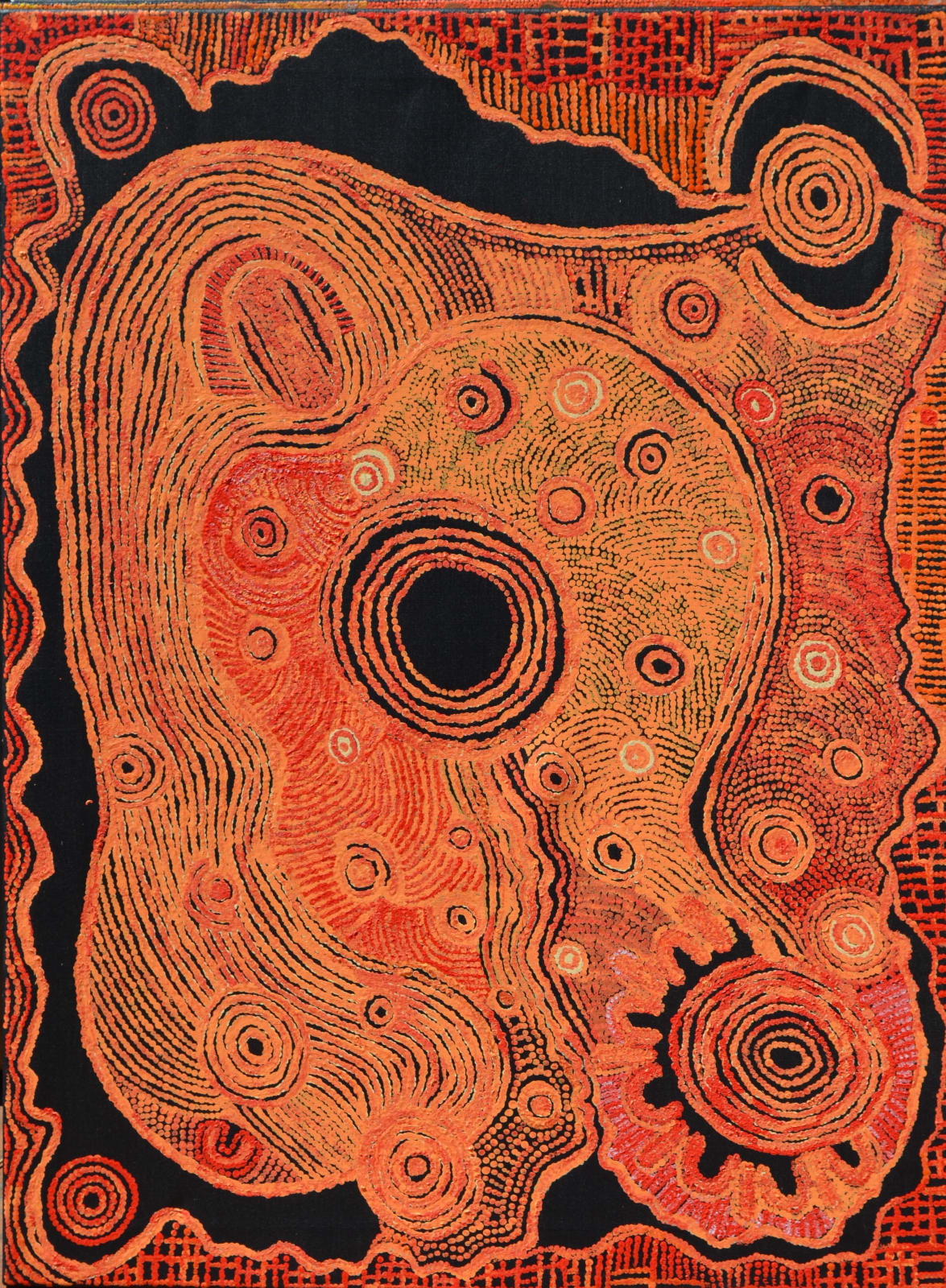ALISON NAMPITJINPA ANDERSON: A solo exhibition
Past exhibition
Alison Anderson Australian, Luritja, b. 1958
Travelling Fire and Water Dreaming
acrylic on linen
122 x 92 cm
833458
'Shapes, forms and colours: these are key elements of our experience of the desert world and the art we make. When we see the wind blowing into the spinifex grass,...
"Shapes, forms and colours: these are key elements of our experience of the desert world and the art we make. When we see the wind blowing into the spinifex grass, and blowing away half of the perfect circles that grass stalks trace out on the red sand around them, we see with our own eyes how the shapes of things are fleeting, passing - we know that life is here today and gone tomorrow. But the patterns and shades of colour we see in our minds have been handed down to us, they have a permanence about them: they define the way we imagine our world.
The colours in the painting are the natural colours of the landscape: they represent the forces in the landscape. The fire that purifies and destroys; the rain that create; wind, also, that has a relationship with both rain and fire. Rain after fire brings out new growth and flowers, wind freshens and cleans the colours of the country. The colours in this painting are in fact the hues of several specific flowers: and these individual flowers play specific parts in our culture. I wont go into these inner depths of sacredness here: but I should like to highlight this special role of colour in our painting. Colour shows the vibrancy of two elements coming together, the fire and the rain together, and the freshness they create. Colour in the desert context, means life, it means this vibrancy. In travelling dreaming stories like this one, the story path heads in one direction and then reverses, it changes its direction constantly, it wheels on itself, it is mobile: hence the pattern of the colours on the canvas, vivid and shifting like the patterns traced out on the face of the country".
The colours in the painting are the natural colours of the landscape: they represent the forces in the landscape. The fire that purifies and destroys; the rain that create; wind, also, that has a relationship with both rain and fire. Rain after fire brings out new growth and flowers, wind freshens and cleans the colours of the country. The colours in this painting are in fact the hues of several specific flowers: and these individual flowers play specific parts in our culture. I wont go into these inner depths of sacredness here: but I should like to highlight this special role of colour in our painting. Colour shows the vibrancy of two elements coming together, the fire and the rain together, and the freshness they create. Colour in the desert context, means life, it means this vibrancy. In travelling dreaming stories like this one, the story path heads in one direction and then reverses, it changes its direction constantly, it wheels on itself, it is mobile: hence the pattern of the colours on the canvas, vivid and shifting like the patterns traced out on the face of the country".
